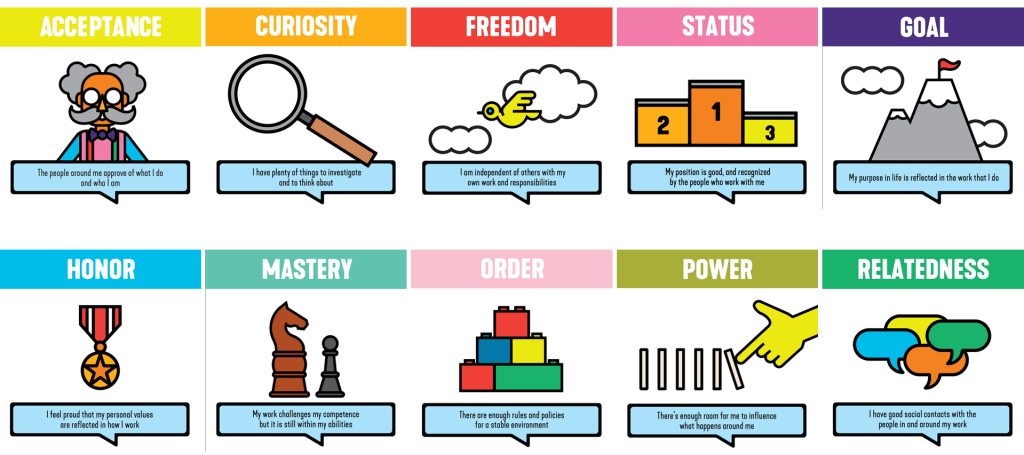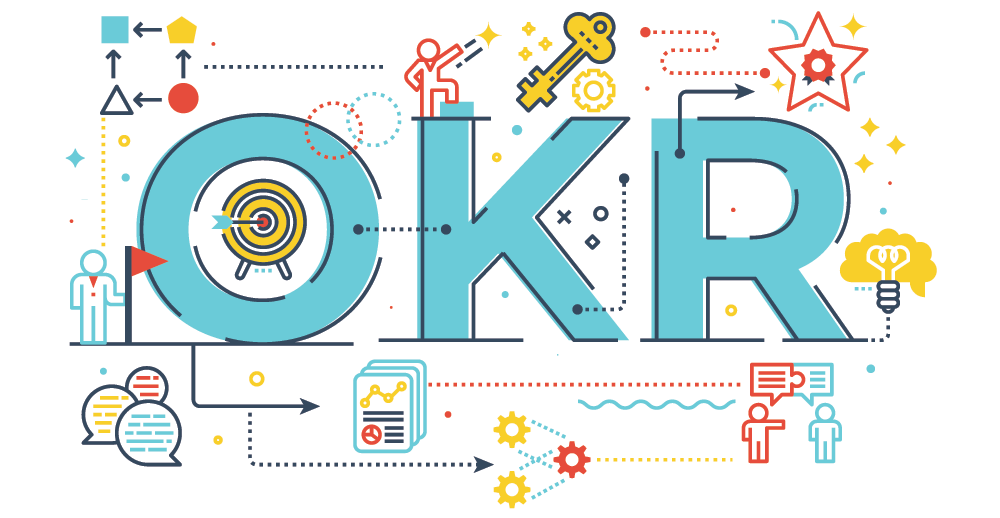
Motivation is the driving energy by which we people reach our goals and succeed. Also, motivation is an enhanced road to autonomy and purpose, a sure mean to get happy and committed collaborators in your organization. And motivation can be extrinsic or intrinsic. The former normally requires physical rewards such as money or noticeable after-effects such as downgrading. Extrinsic motivation usually varies in time with the changing needs of people but it usually have the sustained prefix of “more…” as in more remuneration, more benefits, more trips, more vacation days, more authority, more people to manage, more bonuses, more money.
Stop. I’m not going to tackle around this any longer. We’re here to play on intrinsic motivation. This one is driven by a concern or amusement in the movements required to realize a vision and the goals related, without depending on outward recompenses or burdens. This means that the stimulus to participate in a particular endeavor emerge from within the person itself as it is something that satisfied not only her mind but also her heart. It is something that surfaces the soul and makes people gladder and better. This kind of motivation came with their own recompenses that include producing encouraging reactions in the person and the team.
Despite the many heart-rending, shifting motivators you may use to revitalize your people, in the last few years we have been focusing our attention to ten of them based on ten intrinsic desires, which Jurgen Appelo derived from the works of Daniel Pink, Steven Reiss, and Edward Deci and that he presented in his Management 3.0 book and later in the courses and workshops on the topic as part of the Energize People – Motivation and Engagement view of these so called ever-changing collection of games, tools, and practices to help any worker manage the organization. They are:

- Acceptance: The people around me approve of what I do and who I am
- Curiosity: I have plenty of things to investigate and to think about
- Freedom: I am independent of others with my own work and responsibilities
- Status: My position is good, and recognized by the people who work with me
- Goal: My purpose in life is reflected in the work that I do
- Honor: I feel proud that my personal values are reflected in how I work
- Mastery: My work challenges my competence but it is still within my abilities
- Order: There are enough rules and policies for a stable environment
- Power: There’s enough room for me to influence what happens around me
- Relatedness: I have good social contacts with the people in and around my work
You can learn more on this subject navigating into the Management 3.0 site on: https://management30.com/practice/moving-motivators/
Enter OKRs

I have found useful to inspire and engage my co-workers, teammates and people around me instead of managing or trying to retain them in order to motivated and energize their spirit and their creativity. And one way to engage and inspire them is through the work with Objectives and Key Results (OKR). These are a way of defining and acting with the end in mind in order to reach goals throughout frequent generation of results with value that allow us to approach the objectives gradually but steadily.
With this so call OKR technique created by Intel fellows and use widely these days by companies such as Google, Microsoft, Amazon and Intel itself, you point to the strategic vision of your organization with challenging but inspiring goals and outline a plan to achieve them via the early and continuous achievement of key results. For example:
Objective: Improve people commitment
Key results:
- Managers amplify positive feedback received from their team members by 200%
- Growth people satisfaction by 25% as reflected in quarterly engagement survey
- Fulfill 25% additional people engagement activities
With OKR you draw a point, not so far from where you and your team are right now, but thought-provoking enough to get them inspired. That is Purpose, one of the three key factors of intrinsic motivation. Then, you let them to choose the way to get there. That is autonomy, the second key factor of intrinsic motivation. Also they need to get expert in the different domains needed to do the work for reaching the goal: that’s Mastery, the third key factor in intrinsic motivation.

Let’s look at this other OKR examples:
This one for a Product Management team:
Objective: Successfully launch version 2 of our 5-star product
Key results:
- Get published product reviews in over 12 publications
- Get over 25000 new signups
- Achieve sign-up to trial ratio of over 35%
- Achieve trial to paid ratio of over 70%
This one for a Software development team:
Objective: Improve our Quality Assurance process
Key results:
- Apply Test-Driven Development in 5 new development teams
- Implement Behavioral Driven Development (BDD) in 5 new development teams
- Uncover at least 125 bugs and open issues in legacy code older than one year
- Increase unit test coverage to 95% of code
And this other one for the top company’s top management:
Objective: Be outstanding – improve to be the best in what we do
Key results:
- Survey 1000 customers on their viewpoint and feelings about we need to be better
- Create an action list of 12 company-wide improvement activities
- All top-management teams must have an inside breakthrough meeting: «How can we improve?»
- Conduct benchmarking analysis related to the service of our 10 key competitors
You can learn more on OKRs browsing the Management 3.0 site on:
Finally, when you give a purpose to people you are delegating on them and so you can dedicate your leadership time to do what you’re better in: you manage the system, not the people. To learn some stuff on how to motivate people through empowerment, please visit my article on delegation in the times of covid_19, clicking here.
So, next time you want to motivate the people around you, in your company or your community, reflect on how you can intrinsically motivate them. I’m sure your process of self-learning is going to take you through some sort of uncovering new ways of make them happier and healthier.
Deja un comentario